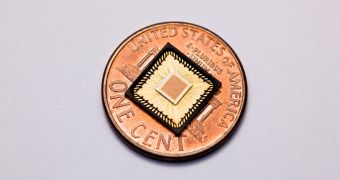The many processors used in today's electronics are alike in the way that they all use binary logic when making calculations, and Lyric Semiconductor has just slammed the market by saying it has developed a chip that uses probabilities, meaning that the electrical signals it works with represent chances, not 1s and 0s.
The transistors of conventional chips are arranged into components called digital NAND gates, but those in Lyric's probability processor are building blocks known as Bayesian NAND gates.
A NAND gate can be used to implement all digital logic functions possible and outputs a '1' if neither of its inputs match.
The output of Bayesian NAND, however, represents the probability that both of said inputs match, and this lets it perform calculations that use probabilities as their input and output.
"We've essentially started from scratch," says Ben Vigoda, CEO and founder of the Boston-based startup.
"To take one example, Amazon's recommendations to you are based on probability. Any time you buy [from] them, the fraud check on your credit card is also probability [based], and when they e-mail your confirmation, it passes through a spam filter that also uses probability," he explains.
Lyric has actually been developing this technology since 2006, partly with funding from the U.S. Defense Advanced Research Projects Agency (DARPA).
"They're interested in some James Bond-type applications," says Vigoda.
Essentially, Lyric's invention intends to improve the speed at which everything from online banking systems to the flash chips used in smartphones and other consumer electronics operate.
The firm sees error checking chips as one of the major possible implementations of its probability processor, since they rely on a kind of statistical calculation that is hard to implement in digital logic.
"Compared to [hard disks], we're still in the early days for flash," says Steven Swanson, a computer scientist at University of California, San Diego, "and it is pretty clear that as flash gets denser, error checking will become more important."
Lyric hopes that its processor will make it inside consumer electronics within two years' time.

 14 DAY TRIAL //
14 DAY TRIAL //